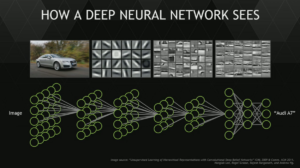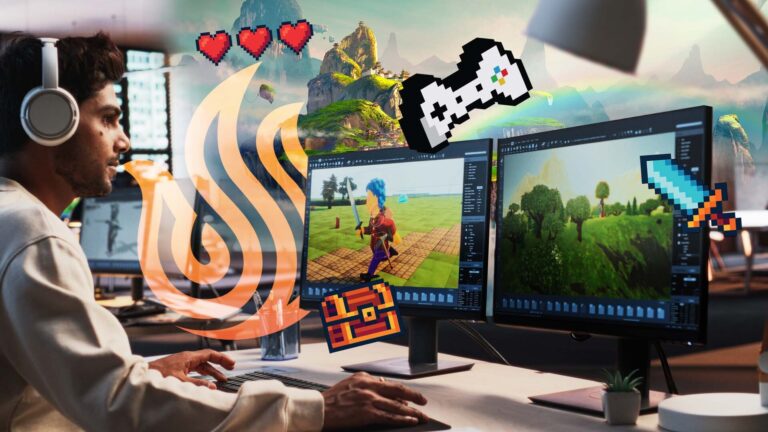Will a chatbot anticipate your every need? Will new virtual reality systems change how business gets done? And what about machines that can help creatives churn out a documentary in minutes? For some of the hottest trending technologies such as chatbots, virtual reality, and machine learning, there are countless applications we can expect in the near future.
These technologies are on the verge of transforming our everyday lives with applications across various industries. A panel at a recent Narrative Summit on the USV campus explored the depths of this technological disruption. We will soon be able to improve how we do our jobs, have personalized, immediate help and even save lives with virtual reality, chatbots and machine learning.
The Tool Talk panelists — Dan Miller (managing director, Opus Research), Mary Jesse (chief strategy officer, VRStudios/VRcade) and Josh Rosen (chief technology officer, Render/ai) — revealed what they’re working on, and how these new technologies will monumentally benefit us, both professionally and personally.
As Mary put it, it was the panel on the “hemorrhaging edge of technology.” Here are some of the big takeaways for anyone aspiring to get into the emerging markets of chatbots, virtual reality, and machine learning.

Chatbots to Become Life Coaches
Dan Miller of Opus Research kicked things off by talking about how chatbot technology is impacting the retail landscape. It was fascinating to hear about how intelligent and sophisticated these machines are quickly becoming and how machine learning is evolving. For example, Dan mentioned that these resources will soon be able to identify a person, whether it’s with voice recognition or something else, and tailor responses specifically to that individual. Chatbots will also have the ability to let you express your intent in your own words and then — considering we can often be imprecise in how we express ourselves — they will make sense of what the user is seeking. For example, you visit a chatbot on a department store website, and instead of asking about a certain product and its availability, the chatbot will provide purchase recommendations based on an event you’re attending or your upcoming vacation.
On top of that, they’ll become more predictive, with the ability to serve as a “life coach” or “financial coach” and guide you on your purchase decisions and selections. An example Miller provided is that say, for instance, you’ve gotten into a car accident and wrecked your car. You simply tell your device that you’ve gotten into a car accident, and from there it will guide you to dial 911, get in contact with your loved ones and insurance, etc. Also, say you want to save $50 per week, it will instruct you on how to reach this goal whether that’s a few less Starbucks visits or taking public transit instead of driving into work.
Endless Virtual Reality Applications
Mary Jesse from VRStudios/VRcade talked about how virtual reality is going to disrupt our world, particularly on the commercial side. She predicted that virtual reality’s path will look very similar to mobile’s path. While a lot of our attention is drawn to the consumer and entertainment uses of virtual reality and augmented reality, there are a lot of virtual reality applications on the commercial side as well. Think medicine, healthcare, education, engineering, training, real estate, architecture and more.
Mary provided us with an example of the benefits of augmented reality and virtual reality in architecture. When an architect and a builder “walked through” a project using VR, one person was much taller than the other. They came to realize that the handrails throughout the building were far too tall. If this hadn’t been caught through the VR system, it would’ve cost the company $300,000 to fix the issue.
On the consumer side of things, VR and AR will be much more limited than we think. Mary put it in perspective. Only a third of the world’s population has a smartphone, and those are relatively cheap compared to AR/VR systems. It’s likely that the majority of the world will not have a VR or AR system in their homes. Instead, they will have to go somewhere to experience it within a system such as a gaming arcade, cinema, shopping mall or IMAX theater.

Machine Learning Applications Will Mean On-demand Documentaries
Toward the end of the session, Josh Rosen took the panel a slightly different direction discussing the mission of his company, Render/ai. After years of writing, directing and producing countless PBS-type documentaries on blue-chip companies, Josh came to a point of frustration as he was doing “robotic work” day in and day out. He would jiggle around a format, find media that supported a story and plug it all in. He decided to develop a code that would use machine learning to take a page from the internet or a topic, and in a few minutes could churn out a simple video or documentary for viewers. And then, this video would self-learn how to fix itself, provide better content to viewers, etc.
To put it in simple terms, think of the Chili’s Yelp page. When you go to the Chili’s page, you can click a button that says “Create Story,” and within an hour, this “story” gets emailed to you addressing all of your questions — how late they’re open, whether they have a drive-thru, what’s on the menu, their location, etc. Over time, this video would learn the common questions that people have and would alter the video to suit the audience’s needs.
These new ideas and innovations are already taking place. We don’t have to “imagine” them anymore. The Narrative Summit panel revealed that virtual and augmented reality has the potential to impact a vast array of industries, beyond the gaming space. Shopping, entertainment, travel, education, fitness, training, manufacturing, and healthcare are just a few industries primed for disruption.
The Narrative Summit event served as a great way to kick off a conversation in our community among storytellers and tech enthusiasts, introduce them to students who are bringing fresh, new ideas to the table, and connect ideas and innovations across the board.
There are countless potential applications that will result in many opportunities for aspiring VR/AR professionals and entrepreneurs. Whether you want to join a tech-savvy startup, a massive corporation or venture out on your own, there’s no “one way” to get involved. Many of the panel professionals started by identifying a problem and experimenting with new technologies to find a unique solution. You just have to get your foot in the door, throw something at the wall and see what sticks. No idea is too “out there” at this point in the game.


